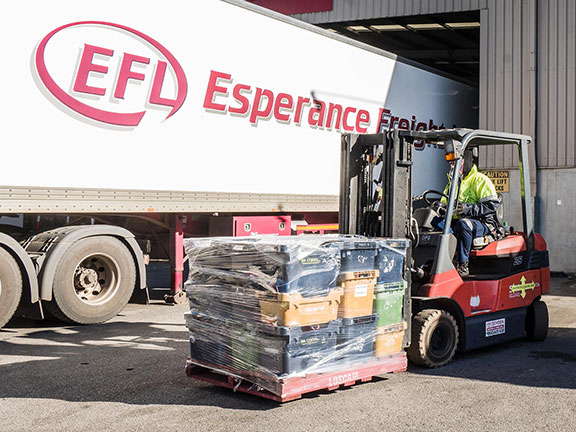West Australian freight company Esperance Freight Lines has re-equipped its Perth depot with six 2.5-tonne payload Toyota 8FG25 combustion counterbalanced forklifts and a Toyota 8FBN25 battery-electric forklift.
Toyota Material Handling Australia says this order means Esperance Freight Lines has bought 22 Toyota forklifts in the last three years for its depots in Esperance, Geraldton and Kalgoorlie.
Previous orders included 2.5-tonne and 3-tonne-payload internal combustion trucks, and an 8FBN25 battery-electric forklift.
EFL managing director Michael Harding says his father, John Harding, founded the company 25 years ago and its first Toyota forklift purchase would date from that time.
“The Toyotas are good and reliable forklifts,” he says. “I’m a hands-on person and the most important purchase factors for me are that the forklifts are economical and that the operators like using them.
“That is a good measure of their operability and means fewer hassles in day-to-day usage.”
TMHA WA major accounts manager Russell Dickson says the EFL order was won in a highly competitive tender process.
“Machine reliability, high levels of operator comfort and lower costs to maintain the fleet were key factors in Toyota winning the order for the latest seven machines,” he says.
Dickson says Esperance Freight Lines’ first Toyota purchases would have been through LiftRite Toyota, before the factory-owned company Toyota Material Handling Australia was formed in 2005 to sell and support Toyota, BT Lift Truck and Raymond material handling products nationally.
He says Toyota’s 2.5-tonne payload 8FG25 is one of the top selling counterbalance forklifts in Australia and is widely used in the transport industry.
The 8-Series Toyota forklifts have a number of leading safety features, including Toyota’s System of Active Stability (SAS) technology that helps prevent tip-overs, an Operator Presence Sensing system that stops the forklift from moving unless the operator is correctly seated at the controls, and an Active Mast Function Controller that can sense instability, thereby limiting the mast angle and speed according to the height and weight of the load.
Other features include a large, easily accessible workspace with a wide foot area, a tight turning circle, ergonomically designed controls and excellent forward visibility.


